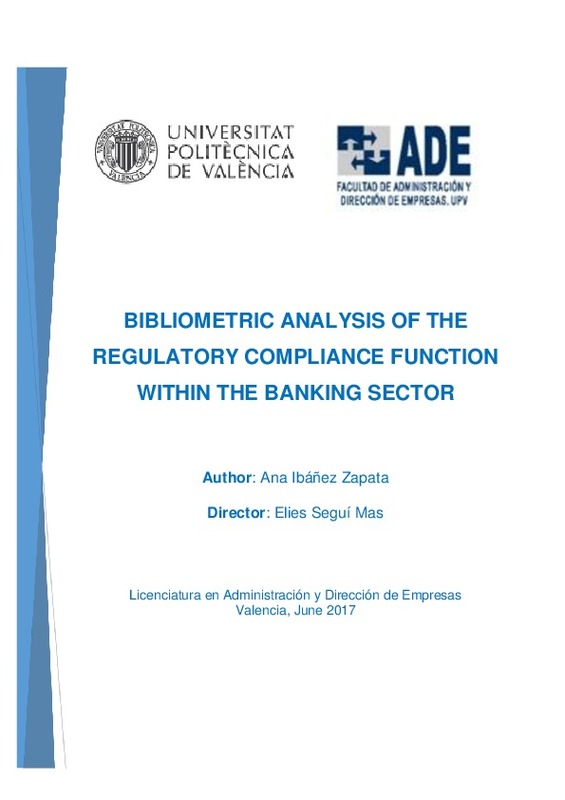|
Resumen:
|
[EN] In today's global marketplace, banking organizations have greatly expanded the scope and complexity of their activities and face an ever changing and increasingly complex regulatory environment. Furthermore, due to ...[+]
[EN] In today's global marketplace, banking organizations have greatly expanded the scope and complexity of their activities and face an ever changing and increasingly complex regulatory environment. Furthermore, due to the consumer credit crisis, several high profile compliance breakdowns, and increased emphasis on consumer protection, the federal and state regulatory agencies, investors, legislators, and the general public are focused on institutions' customer practices and regulatory compliance performance like never before. Moreover, a compliance failure can result in litigation, financial penalties, regulatory constraints, and reputational damage that can strategically affect an organization.
Regulatory compliance is an organization's adherence to laws, regulations, guidelines and specifications relevant to its business. This discipline has become more prominent in a variety of organizations and the trend has even led to the creation of corporate, chief and regulatory compliance officer positions to hire employees whose sole focus is to make sure the organization conforms to stringent, complex legal mandates.
In this context, the aim of the present work is to provide with key notions regarding Regulatory Compliance applied to the banking industry, and the key guidelines in order to design and implement a compliance structure and methodology in a financial entity.
A subsequent bibliometric analysis will be performed in order to obtain the main aggregated attributes of the existing literature related to banking regulatory compliance. This analysis will be based on the publications obtained from the bibliographic database Web of Science and will include the use of bibliometric tools such as BibExcel, designed to analyse bibliographic data, and Pajek, designed for visualization of large networks. The analysis will contain the most commonly used indicators to analyse the features of the set of documents studied, such as collaboration networks, keywords and co-wording, authorship and geolocation.
Finally, an in-depth analysis of the literature that populates the bibliometric analysis will be the basis to detail the ifferent perspectives maintained by the authors publishing in this area.
This analysis aims to gather significant conclusions about the treatment adopted towards Regulatory Compliance depending on the geographical area, existing regulation and other social factors.
[-]
|







